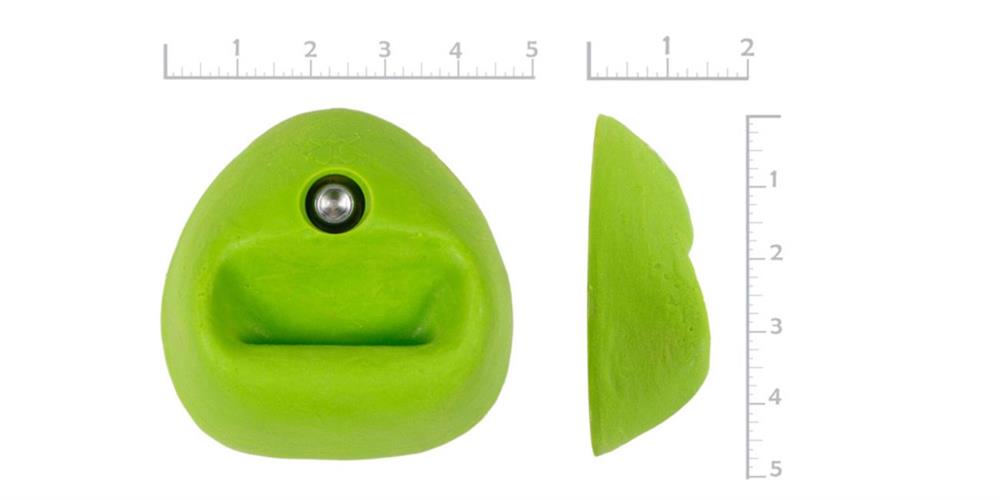Ninja Warrior courses have captured the imagination of fitness enthusiasts everywhere. These courses, inspired by the popular TV show, challenge participants with a variety of physical obstacles that test strength, agility, and endurance.
Many fans and fitness enthusiasts have taken the initiative to create their own backyard Ninja Warrior obstacle course to train. If you’re interested in setting up an at-home Ninja Warrior course, you’ve come to the right place. Check out our tips to help you create the ultimate course below!
Essential Equipment for Your Home Course
Before we get into advice on how to design and build your Ninja Warrior course, there’s some equipment you’ll undoubtedly need. The key is to strike a balance between essential and optional gear to ensure a versatile and challenging course.
Choosing the Essentials
First and foremost, you will need basic structures, such as pull-up bars, monkey bars, and climbing ropes. These foundational elements are crucial for building upper-body strength and endurance.
Luckily, these critical elements of every Ninja Warrior course are easy to design and build. If you choose durable, reliable materials and make the bars and structures with solid foundations, these essentials should be easy to make. Many people build custom frames for ropes and bars, but you can integrate these pieces via existing buildings or trees if available.
Adding Optional Equipment
While the essentials are necessary, optional equipment can enhance the variety and difficulty of your course. Consider adding items like cargo nets, balance beams, and wall climbs.
Cargo nets can be hung vertically or used as bridges between platforms to test your balance and coordination. Wall climbs with climbing training holds are also great options, as they’re easy to customize and adapt based on the user and your skill progression.

Tips for Constructing Your Own Ninja Warrior Course
When setting up an at-home Ninja Warrior course, consider versatility and diversity to constantly change the obstacles and challenge your body as your skills and fitness develop. Our tips explain how to design and construct a home course worthy of a Ninja Warrior like yourself.
Always Overbuild
One of the most critical aspects of constructing a Ninja Warrior course is to always overbuild your structures. This means using materials that are stronger than necessary.
For instance, if you’re building a pull-up bar, opt for industrial-grade metal pipes instead of standard ones. This ensures the safety of you and other course users and the longevity of the obstacle course.
Use Diverse Challenges
Variety is the spice of life, and this holds true for Ninja Warrior courses as well. Incorporate a mix of challenges that test different muscle groups and skills. Include obstacles that require climbing, swinging, balancing, and jumping.
This diversity will keep the course exciting and help you develop a well-rounded fitness regimen. Research real courses from the TV show and other at-home Ninja Warrior courses people have built for inspiration in selecting your course’s obstacles.
Consider Available Space and Size of Obstacles
Before you start building, carefully assess the available space in your backyard. Measure the dimensions and plan the layout of your course accordingly. Ensure that there is enough room between obstacles to avoid congestion and accidents.
The size of each obstacle should also be proportional to the space you have. Large obstacles like wall climbs may require more room, while smaller elements like balance beams can fit into tighter spaces.
Make Obstacles Modular
Modularity is a game-changer for Ninja Warrior courses. It means designing your obstacles to be easily movable and adjustable. This way, you can reconfigure the course to keep it fresh and challenging.
For instance, use modular climbing holds that you can rearrange on a climbing wall, or build free-standing structures that you can relocate when you want. This flexibility will allow you to adapt the course to different skill levels and training goals.
Incorporate Safe Landing Spots
Safety should always be a top priority when constructing your Ninja Warrior course. Make sure to incorporate safe landing spots for each obstacle. Use high-quality crash mats or foam padding to cushion falls and reduce the risk of injury.
Place these landing spots strategically at the end of each obstacle and under high-risk areas like monkey bars and climbing ropes. Additionally, put pads on sharp corners and edges throughout the course to protect yourself and other Ninja Warriors in training.
Get Creative With Everyday Objects
You don’t need to break the bank to build an impressive Ninja Warrior course. Instead, you can get creative with everyday objects that you already have around the house.
Many Ninja Warriors use old tires for tire flips or obstacle jumps. Likewise, PVC pipes are excellent alternatives for balance beams and swinging bars. The possibilities are endless, and using recycled materials is both cost-effective and environmentally friendly.
Build in Progressions of Difficulty and Skill
A well-designed Ninja Warrior course should cater to different skill levels and provide room for progression. Start with simpler obstacles and gradually increase the difficulty as you improve.
For example, begin with a basic pull-up bar and later add monkey bars or a salmon ladder. This will keep the course accessible to beginners while providing challenges for more advanced athletes. It also allows you to track your progress and set new goals.
Consider Your Audience
When designing your Ninja Warrior course, consider the preferences and abilities of the people who will be using it. If it’s a family-friendly course, include obstacles that are suitable for children and adults alike.
For a more competitive setup, focus on advanced challenges that require strength and agility. Tailoring the course to your audience will ensure that everyone has a fun and rewarding experience.
Keep Materials Organized
Getting into the actual construction of the course, it’s important to always organize your materials. Designate a storage area for tools, spare parts, and equipment.
Use bins and shelves to keep everything neat and accessible. Labeling items can also save time and prevent confusion. An organized workspace will make the building process more efficient and enjoyable.
Test the Course With a “Break-It Day”
Before officially launching your Ninja Warrior course, conduct a “Break-It Day” to test the durability and safety of each obstacle. Invite friends or family members to try out the course and provide feedback.
Monitor how the obstacles hold up under different weights and stresses. Make any necessary adjustments or reinforcements based on the test results. This trial run will help you identify and fix potential issues before regular use.

Construct Your Ninja Warrior Course With Atomik Climbing Holds
Building a Ninja Warrior course at home is a rewarding project that offers endless fun and fitness benefits. By following these tips and using high-quality materials like Atomik Climbing Holds, you can create a safe and challenging course that caters to all skill levels.
Whether you’re training for an upcoming competition or simply looking to stay active, Atomik Climbing Holds can help you build the ideal Ninja Warrior obstacle course for your home. Discover our selection of training holds and begin building your dream course today!



